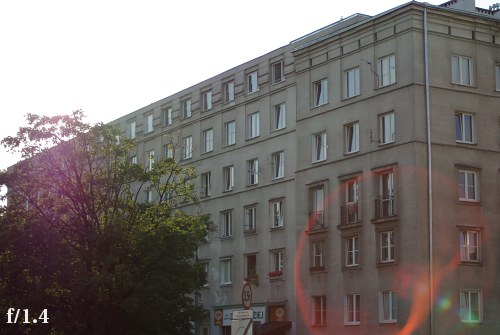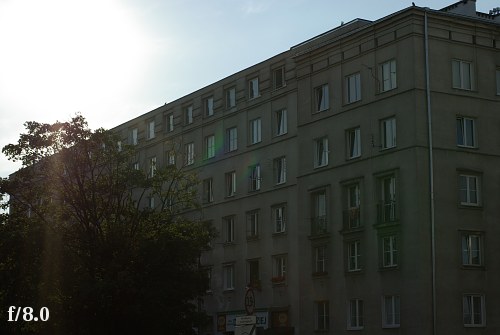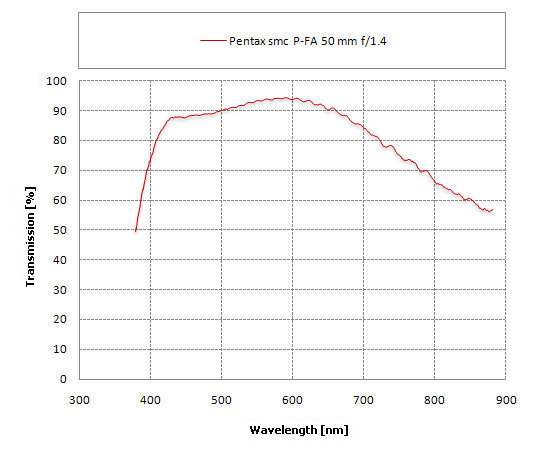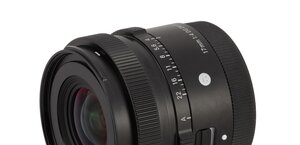Pentax smc FA 50 mm f/1.4
9. Ghosting, flares and transmission
 |

|
The work efficiency of very well-known SMC coatings can be assessed by looking at the transmission graph for the tested lens, presented below.
Please Support UsIf you enjoy our reviews and articles, and you want us to continue our work please, support our website by donating through PayPal. The funds are going to be used for paying our editorial team, renting servers, and equipping our testing studio; only that way we will be able to continue providing you interesting content for free. |
- - - - - - - - - - - - - - - - - - - - - - - - - - - - - - - - - - - - - - - - - - - - - - - -
 |
The maximum of its possibilities in this category the lenses reaches near 600 nm wavelength, where the transmission amounts to 93-94%. Taking into account the fact that we deal here with 6 groups of elements so 12 air-to-glass surfaces, on one such surface we lose 0.6% of light. It is not much but still two times more than the level of 0.3%, touted by Pentax. Apparently the best coatings are reserved just for “star” and elite “limited” products. Fortunately for the 50 mm, tested here, the transmission efficiency is also high at other wavelengths and, for instance in the centre of the visible spectrum it reaches significantly over 90% and for blue light – on the level of 88%.






